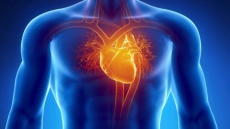Whether you're an avid exerciser or seeking to amp up your routine, fitness professionals are pointing to short, intense workouts and back-to-basics strengthening sessions among the hot trends to help you break a sweat in 2015.
In recent years, obstacle course races have proved to be a popular draw among those testing their physical and mental mettle navigating through gruelling boot camp-style exercises littered along the way to the finish line. But for individuals still seeking a challenging workout that is shorter in duration and free of tire-flipping and fire-walking, high-intensity interval training (HIIT) may be a viable option.
Characterized by intense bursts of exercise followed by brief rest periods, HIIT topped the list in canfitpro's first national fitness trends survey, which polled nearly 2,000 fitness professionals. Ranking second was functional fitness, described as exercise using movements to prepare individuals "for the activities of daily life."
"Doing a squat with a barbell across your back is a very functional movement because we do squats all day long, whether it's getting in and out of a car or sitting down on the toilet or getting out of an office chair," said Rod Macdonald, vice-president of canfitpro, whose organization bills itself as the largest provider of education in the Canadian fitness industry.
South of the border, the American College of Sports Medicine ranked HIIT second on its 2015 fitness trends survey, with body weight training — like pushups and pullups — topping their list.
Macdonald said he isn't surprised to see HIIT topping the Canadian list.
"High-intensity interval training allows the fitness professional to integrate a lot of effective work in a very short period of time which is also appealing obviously to the participant ... who maybe doesn't have a lot of time, or on certain days doesn't have a lot of time and they still want to get a great workout."
Macdonald said individuals just starting off with an exercise program should work with a certified fitness professional and be screened for any underlying health issues beforehand. But if they're in good condition, HIIT is OK provided they're supervised and go through a full warmup and cooldown, he added.
Vancouver-based fitness instructor Amanda Vogel said in the HIIT class she leads, some participants will opt to go "really hard" in intervals while others adopt a more moderate pace.
"We're all working together within the framework of what everyone is able to do," said Vogel.
"I still think there's a lot of benefit to that because one, they're moving, which is really important, and anything people are going to enjoy that's going to get people moving in the right direction of consistent exercise is going to be beneficial."
Still, Vogel said one potential downside is that participants can sometimes go overboard in terms of frequency. She pointed to the American Council on Exercise which recommends individuals don't do more than two days of HIIT per week.
"You don't want to have every day that same kind of very intense workout. You want to be able to vary your workout," said Vogel, who tests and reviews fitness products and devices as a blogger with Fitness Test Drive.
"So you do some intense, some that are more steady — which might mean at a more moderate pace — and then, of course, even a day or two during the week that's more of a recovery-based casual walk or something to that effect."
Rhonda Roberts Smid, founder of TAB Fitness (short for The Art of Balance), places a strong emphasis on mind-body connectivity at her Toronto-based studio, focused on helping participants attain proper alignment and developing a strong core through her classes.
"The arms and the legs, which is usually where you see most of the beauty — your biceps, your triceps, your quads, those types of things — they will not work efficiently if your middle is not working efficiently. So everything usually stems from the middle part of the body and works its way out."
Roberts Smid said it's important for people who take on more physically intensive classes to realize they may not necessarily be getting a better workout, and is a proponent of adopting a more moderate approach — particularly for novices.
"I think when you do something that's very aggressive immediately — because your body is super sore and you see the beauty muscles shining right away — you think 'Yeah, this class is definitely giving me what I need.' But underneath all of those beauty muscles is the foundation. And when that is weak it tends to break down quickly, and that is why people are getting injured in a lot of these more intense classes.
"My suggestion to people always is slow turtle. If you're new to working out don't throw yourself into the (Tough) Mudder or a half-marathon."
Regardless of which type of workout they prefer, Macdonald said it's important that everyone exercises and adopts a regimen best suited to them.
"If somebody's going to go to the gym and they wouldn't have otherwise and they're going to do something that's moderate or even low-intensity, I would rather that they do that than not go to the gym at all."





